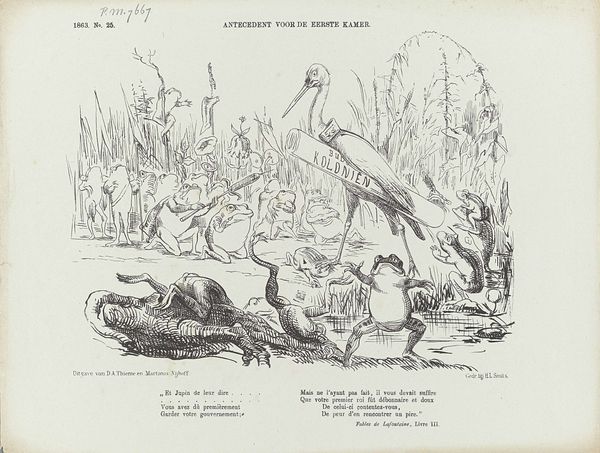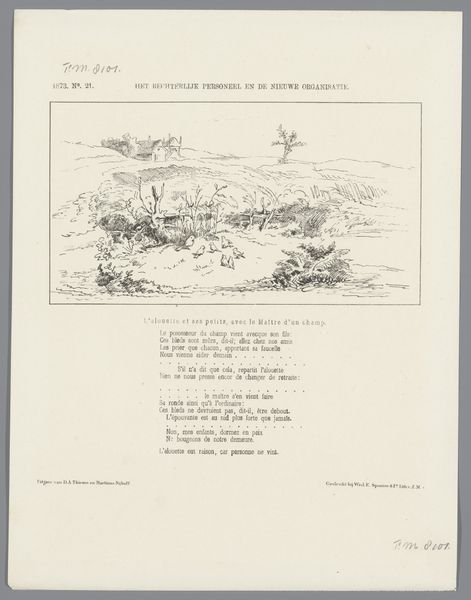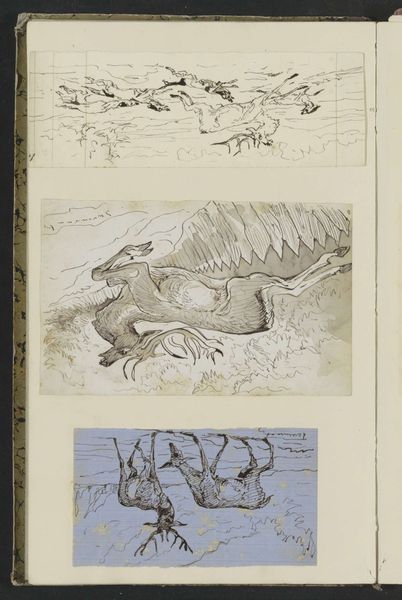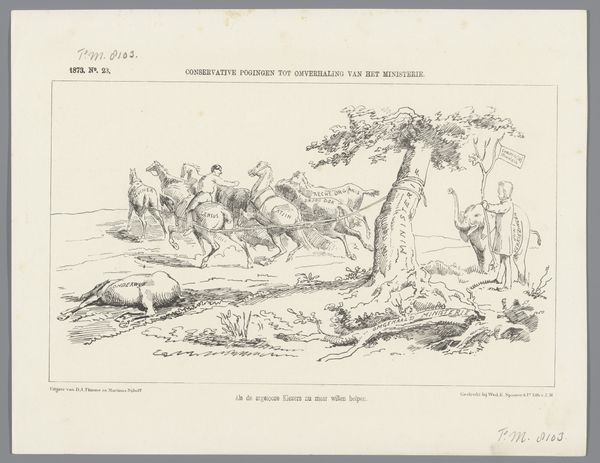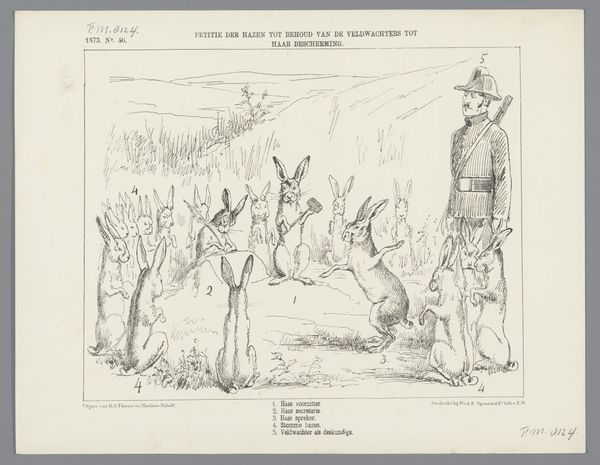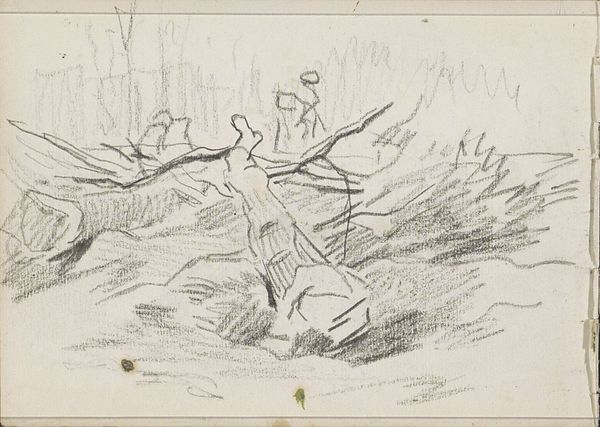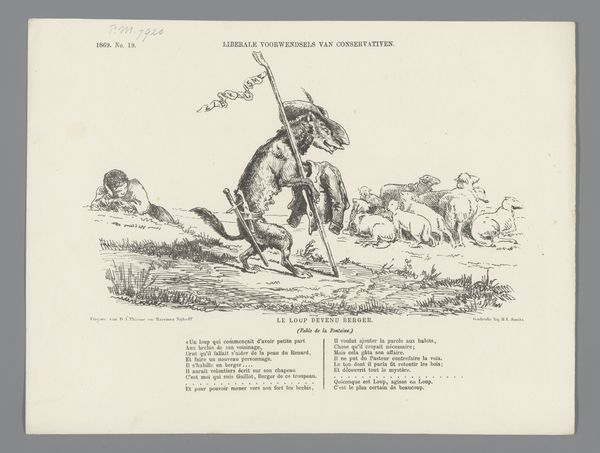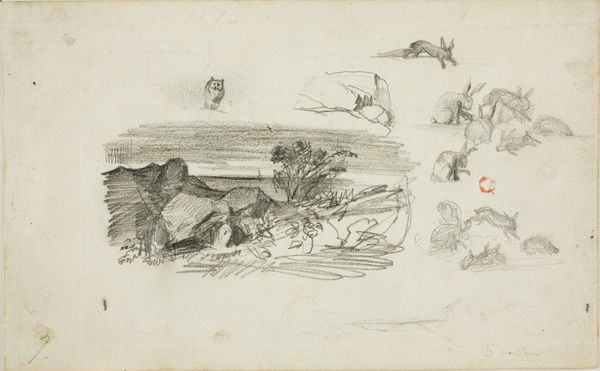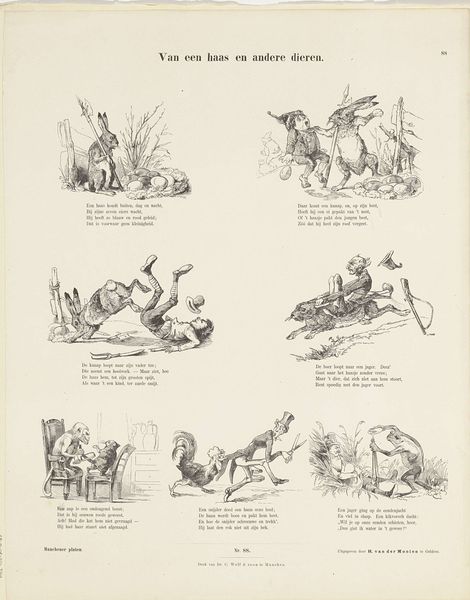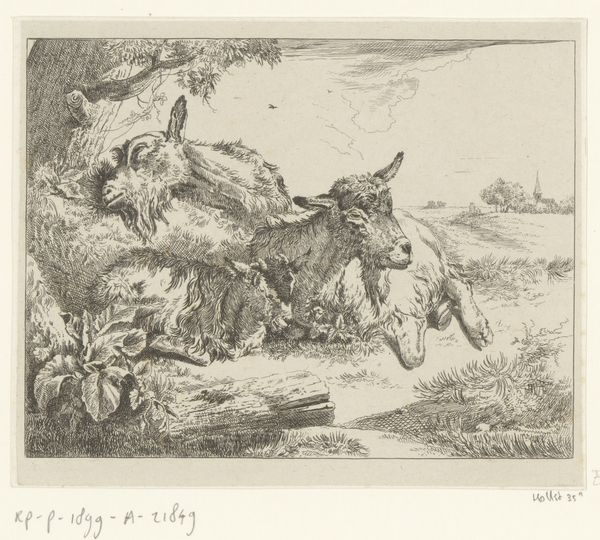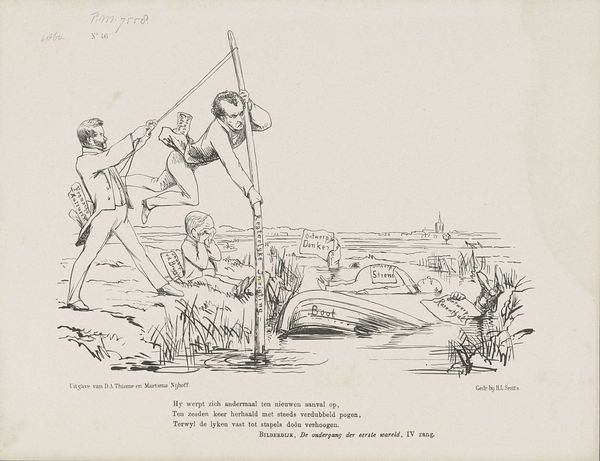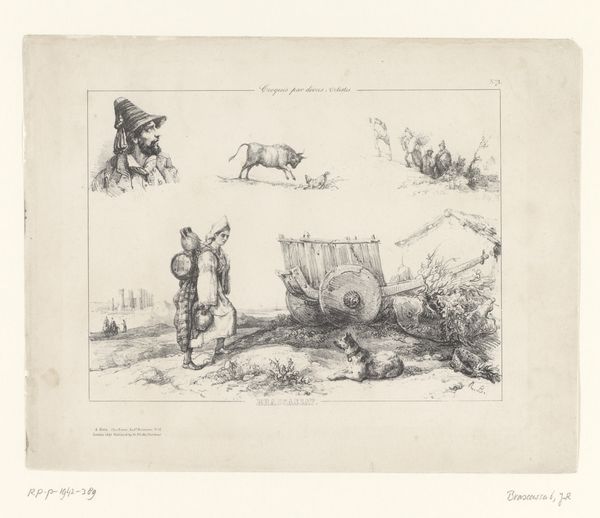
Spotprent op de angst in Amsterdam bij de doorgraving van Holland op zijn smalst, 1863 1863
0:00
0:00
drawing, print, etching, ink, pen
#
drawing
#
comic strip sketch
#
quirky sketch
#
narrative-art
# print
#
etching
#
caricature
#
personal sketchbook
#
ink
#
idea generation sketch
#
sketchwork
#
ink drawing experimentation
#
folk-art
#
pen-ink sketch
#
sketchbook drawing
#
pen
#
storyboard and sketchbook work
#
sketchbook art
Dimensions: height 215 mm, width 275 mm
Copyright: Rijks Museum: Open Domain
Curator: Let's look at "Spotprent op de angst in Amsterdam bij de doorgraving van Holland op zijn smalst, 1863," an etching by Johan Michaël Schmidt Crans. At first glance, the array of bunnies seems whimsical. Editor: They do! It's mostly monochromatic but active, restless—like a flurry of anxious energy captured on paper. Are they running from something? Curator: Exactly. This etching is a caricature addressing the anxieties surrounding the excavation of the Netherlands, depicted through these fleeing rabbits. Observe how the artist uses line work to convey frantic motion, exaggerating their features to emphasize fear. Editor: I find that so telling. Look how Schmidt Crans leverages these innocent creatures. Rabbits have often represented vulnerability and cowardice. They’re an easy target for ridicule and reflect the perceived weakness of those opposing the canal project. Curator: Absolutely, their flight embodies the resistance to change and fear of the unknown that often accompanies progress. And there’s an added layer in how it taps into historical tensions of land reclamation. The poem printed below directly addresses human hard labor and its comparison with animal digging work. Editor: Precisely, the textual context below anchors our interpretation, offering clues to understanding Dutch identity at the time. It’s a political piece but the seemingly childish subject matter renders it digestible for popular consumption. Curator: It demonstrates how political commentary was disseminated at a time when overt expressions could be met with disapproval. Editor: The artist is using humor and accessible symbolism to speak directly to the population’s fears, their resistance, and their agency. Curator: The stark contrast between the delicate lines and the weighty political context really enhances the print’s impact. It reminds us that even the smallest image can contain complex commentary. Editor: It also highlights how artists function as commentators in critical dialogues on political decision-making, often with wit and nuanced observation.
Comments
No comments
Be the first to comment and join the conversation on the ultimate creative platform.
